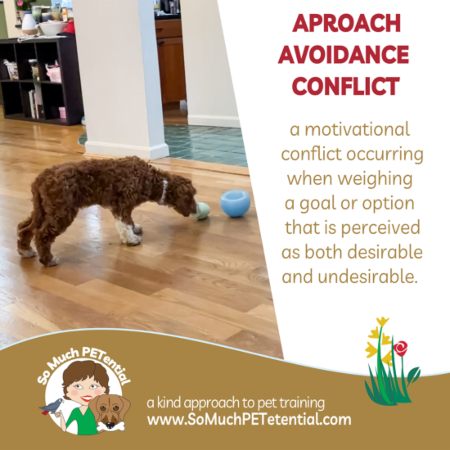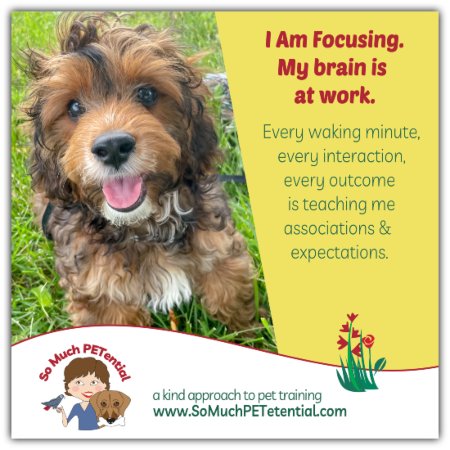Let’s face it. Small puncture wounds (and the pain that comes with those wounds) on your hands and all up your arms is most definitely not on the list of puppy ownership pleasures. While it is natural for puppies to use their mouths, it is also typically a puppy training priority among families to stop puppy biting and puppy nipping. Understandably so.
 To minimize and even stop or prevent puppy biteyness, it is first helpful to understand some of the root causes for that behavior, so that you can make changes that will affect your puppy…and ultimately make your together time more fun.
To minimize and even stop or prevent puppy biteyness, it is first helpful to understand some of the root causes for that behavior, so that you can make changes that will affect your puppy…and ultimately make your together time more fun.
Below are a few of the reasons for bitey puppies and tips for stopping them.
- Your puppy is overly tired.
Young puppies need A LOT of sleep….in the neighborhood of 16 to 19 hours DAILY. Activities that require your puppy to move, use their senses, and think through mental challenges are very tiring. Just as with human kids and toddlers, being overly tired can cause your puppy to zoom, become ‘more’ bitey, and more prone to do other behaviors you do not like. You may refer to your child as cranky and your puppy can get that way too.
If your puppy is exhibiting those ‘cranky’ behaviors, that is a sign that a nap would do your puppy good. Don’t think about it as giving your puppy time out but instead about helping your puppy to get his needs met. This is one of the benefits to teaching your puppy early on to relax, settle and sleep in a crate or other confinement space located in a quiet area. Often when a puppy is out with you all day, he is not getting adequate rest. As soon as you move around, he is right at your feet. Scheduling naps throughout the day (and being aware of signs that your puppy is tired) is an important part of puppy raising.
- Your puppy is frustrated.
Remember your puppy was not born knowing and understanding your expectations. Young dogs can be impulsive – they see something, they want it. Not being able to do or get what they want can easily cause frustration. Frustration can also be caused by a lack of understanding or a lack of control in any given situation. It could be that you are preventing your puppy from having access to something or you are restraining your puppy or you are trying to teach your puppy a behavior in steps that are making learning difficult.
If you are noticing more puppy biting in these kinds of situations, take note of when and where the behavior occurred. Then come up with a plan for how you can break the steps or behaviors down with a higher rate of reinforcement to help your puppy (and you) so that the frustration factor is minimized and even not there.
Get yourself out of the ‘stopping’ behavior thought and instead focus on what you would like for your puppy to do in that situation. If your puppy is biting at the leash, take note of the environment and what could be causing your puppy to do that. Is the leash keeping him from getting to something? Is the leash pulling him closer to somewhere he does not want to go? Does he not like having that strange attachment clipped to his body? Then take small steps to teach your puppy different associations with the leash.
Teaching your puppy to understand impulse control is also important. Here is a link to a beginner Zen game.
- Your puppy is overstimulated.
Young dogs can get overstimulated and over-excited during different activities and in different environments. Signs to watch for include: your puppy is using increasing force and biting more quickly and repeatedly during an activity; your puppy has a growl in his voice as he flails with a toy or piece of clothing; in addition to the biting, your puppy has a higher pitched and more rapid bark, his heart rate has accelerated, and he can not do behaviors that you have taught him. (These signs can also be due to frustration.)
These are reasons why an overstimulated puppy can especially be dangerous around young, active children and older adults with thinner skin (even more so with a larger puppy). Kids should always be actively supervised when around a puppy so that you can redirect before trouble occurs. Wild and crazy behaviors should occur away from puppies and kids can also be taught how to understand your puppy’s wants and needs. Puppies can learn calm behaviors like laying down at certain times. When you ca not supervise, keeping your puppy in another area away from little bodies will prevent problems before they occur. For more information on how I can be of help to you and your kids, please visit my Dog Training For Kids page.
Be aware of how the type of play and interaction you have with your puppy causes your puppy to behave. If fetch or chasing a toy causes your puppy to be overstimulated, stop and regroup. (Become very still or even get space from your puppy behind a barrier so as to avoid adding fuel to that fire to give your puppy a moment to calm. You may also need to put your puppy in his crate or confinement space to settle down.) By watching carefully, you can learn to see those behaviors in your puppy that indicate heightened arousal and tone down your activity. Interrupt play every few minutes. It is also good to teach your puppy an off switch – to be able to go from playing and moving around to a stationary position like laying down. I love to teach lessons through play. As an example, I may move a toy around for a puppy to chase it. Then ask for a sit and when the puppy sits, resume play.
- Your behaviors encourage biting.
This one definitely has overlap with some of the reasons above; and there are additional notes as well. The behaviors of people can actually be the cause of your puppy’s biting.
Quickly pulling your hands away from your puppy (or dog) can definitely cause your puppy to lunge toward it with intensity. For mouthy puppies and dogs, I hold the treat between my thumb and my index finger when presenting it. You could also drop the treat on the ground.
Running away from puppies, yelling, screaming, pushing them away are all actions that can cause your puppy’s arousal to heighten which can lead to biting and pulling at clothes. Instead, practice pro-actively teaching your puppy how to interact with your moving body, and prevent opportunities for your puppy to practice chasing and pulling at you. Giving your puppy toys to have in his mouth or to redirect to is helpful. Here is a link to me showing how I taught a puppy to walk by my legs instead of grabbing at my pants
When you sit or lay on the floor for a period of time with a wide-awake puppy, you are offering lots of tempting opportunities to grab at, pull on, tear at, nip at. Instead, try kneeling or sitting next to your puppy. Only sit on the floor when you have a toy for your puppy’s focus, are engaged in training, or your puppy is tired and resting.
Do not pick up a squirmy puppy as squirmy puppies are prone to be bitey puppies.
Petting your puppy for too long or in places where your puppy does not want to be touched (like reaching for over your puppy’s head) can also cause your puppy to use his mouth to get distance. Practice petting your puppy for 3 to 5 seconds and watch your puppy’s body language, carefully paying attention to distance increasing or distancing behaviors. If your puppy wants distance (some examples include: he may look away, lean away, yawn, do a quick lip lick), remove your hand. If your puppy nuzzles you and moves toward your hand, you can continue to pet. Additionally, you can practice teaching your puppy to feel good about having hands around his body. In this video, I show how I did that with my Dawson when he was young.
It could be too that your puppy has learned that biting you gets attention, movement and noise. After all, that is what happens after your puppy puts his mouth on you. Remember, reinforcement history builds behavior. Try to prevent practice of that behavior (so that it does not strengthen with practice) by making sure your puppy’s needs are being met and having good management in place. However, if your puppy does get his mouth on your skin, be unexciting and still and, if necessary, put a barrier between yourself and your puppy. Then go back and give your puppy another opportunity to engage without teeth marks. And teach your puppy that interacting with you without a mouth on you results in positive outcomes.
- Your puppy is not feeling well or may need to potty.
When you are not feeling well, often that affects your behavior. Your puppy is the same way. An upset stomach or more could make for an overly bitey little animal. If you suspect that, you may want to reach out to your veterinarian. There are also times when your puppy’s restlessness is due to needing to relieve himself. Make sure to take him out regularly and get to know his schedule.
Oh yes, and, there is another reason for puppy biteyness…it is just part of being a puppy. Puppies go through teething stages, they explore with their mouths, they may initiate play with their mouths. Using careful management to prevent your puppy from grabbing or damaging things you do not want him to have will help you to focus your energy on teaching your puppy all of the behaviors you want to see more.







